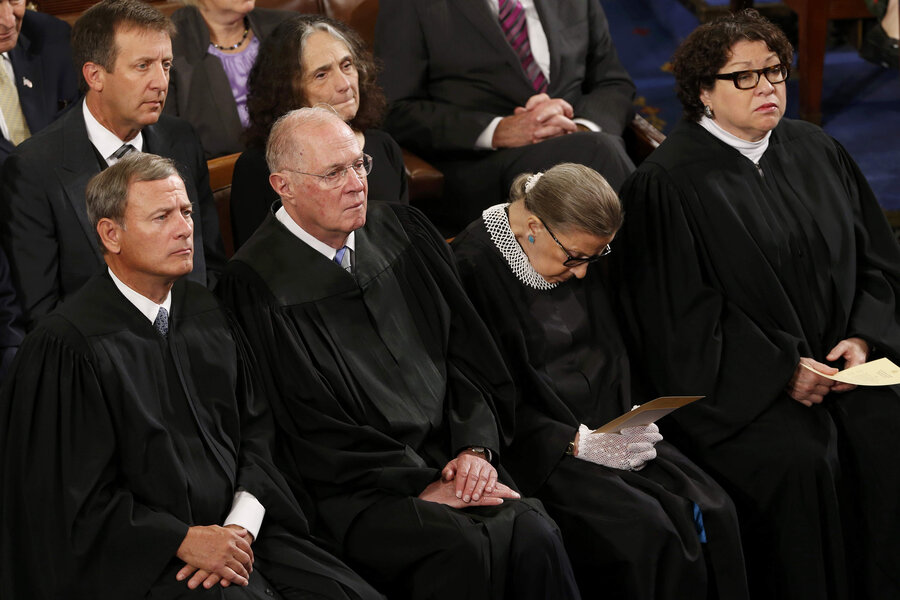What's on the docket for Chief Justice Roberts's next decade?
Loading...
Monday marks the start of Chief Justice John G. Roberts Jr.’s second decade in court. Over Roberts's first ten years, the Court made important decisions on a wide range of national issues including health care, privacy, gun rights, campaign finance, and marriage equality. This decade brings a new host of potentially landmark decisions.
“This coming term will again put into focus that the court is divided along partisan lines and that the 2016 presidential elections will be hugely consequential in shaping constitutional and other law for perhaps a generation or more,” said Neal E. Devins, a law professor at William & Mary in an interview with the New York Times.
The Times characterized the Court's last term as one of “leftward drift and acrimony,” citing bitter exchanges over the death penalty.
The upcoming term, which will likely hear cases on death penalty, abortion, union laws, and affirmative action, will establish whether this drift was more than just an anomaly.
With the recent accusations against Planned Parenthood, it’s likely the Court will hear its first abortion case since 2007. The Times reports the most likely case is Whole Woman’s Health Center v. Cole, No. 15-274, “a challenge to a Texas law that threatens to reduce the number of abortion clinics” from 40 to 10. “Should the court agree to hear the case, it is likely to produce the most important abortion ruling since 1992, when Planned Parenthood v. Casey reaffirmed the constitutional right to abortion identified in Roe v. Wade in 1973.”
Union laws have also been a topic of controversy. “The question of whether teachers and other government employees can be required to subsidize the speech of a union they do not support as a condition of working for their own government is now squarely before the court,” Mark Mix, the president of the National Right to Work Legal Defense Foundation, said in a written statement referring to Friedrichs v. California Teachers Association, case No. 14-915. The case argues that “being compelled to pay union fees to subsidize [disagreeable] activities” is a violation of First Amendment rights.
And in a move earlier this summer, the Supreme Court decided to hear the case on affirmative action again, suggesting the “court may limit or even end” such policy. “A decision barring the use of race in admissions would undo a 2003 ruling that the majority said it expected to last for 25 years.”








